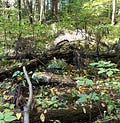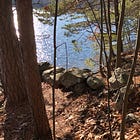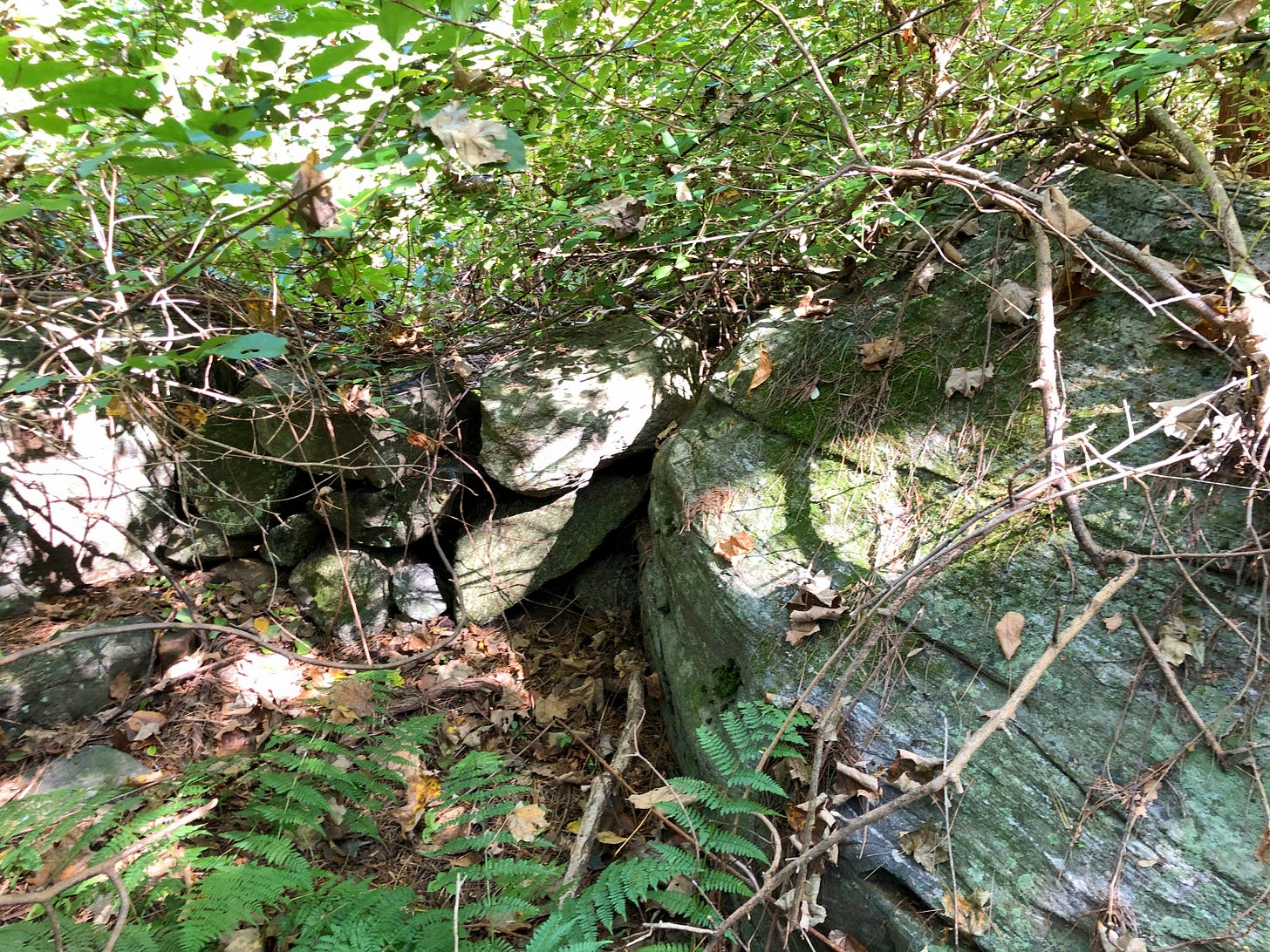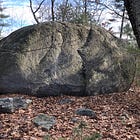Rediscovering Kequasagansett began my posts here on Substack at the end of 2021. In the series, I shared the stonework and the research I’d been finding looking into Gates Pond in Berlin, Massachusetts.
I’ve seen many more stone sites since then and learned a great deal about Indigenous Stonework in the Northeast through additional research and in discussing findings with other stone site investigators.
Speaking of going back to Kequasagansett, I’ll be leading a Field Trip at Gates Pond as part of the NEARA (New England Antiquities Research Association) Fall Conference (details at NEARA.org). In anticipation, I revisited a couple of sites at Gates Pond last week, as it had been a little while since I’d seen them. While there, I followed a trail I hadn’t yet been down — and found more stonework.
Back to An Early Discovery
Before my new exploring, I made sure the stonework I’d found three years ago was where I thought it was, and it was indeed there. But… it’s early fall, so there is still a lot of brush and vegetation obscuring the stones. It’s currently kind of hard to tell it’s still there!

I originally came across this stone row made up of boulder-sized stones north of the pond on my initial visit to Gates in late 2020. I was following in the footsteps of Peter Waksman and his blog Rock Piles. He’d written a few articles on stonework found around Gates back in 2011-12 which I’d read prior to my visit but didn’t memorize, as I wanted a bit of my own adventure finding things.
And I did find my own adventure! It turned out that this stone row, with it’s turn and possible Serpent Head ending, and its accompanying linked boulders, hadn’t been found by Waksman earlier, a happy discovery in itself, made when my video of the stonework was shared on Rock Piles by contributor Tim MacSweeney.
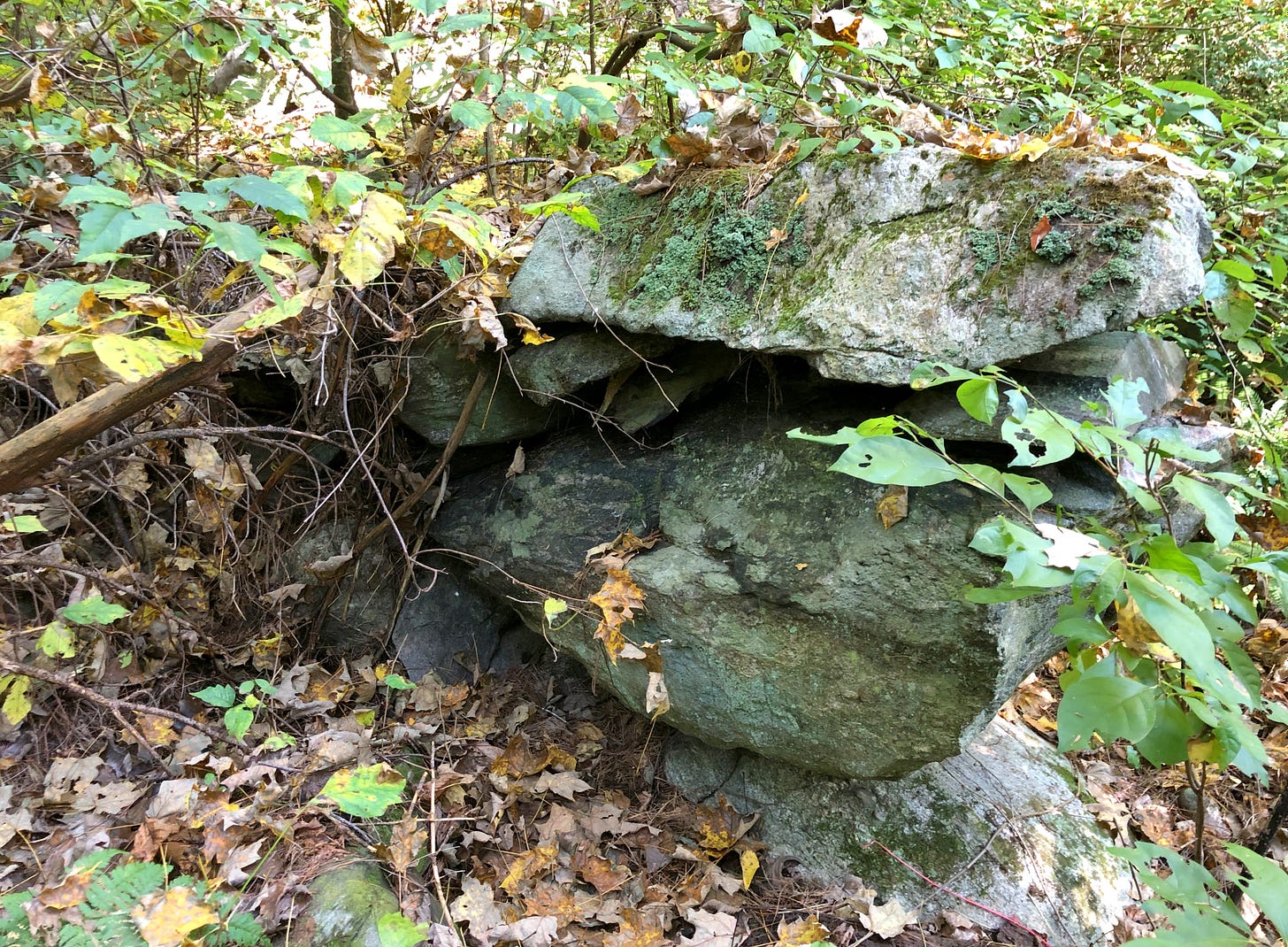

Returning to King Philip Rock
This impressive boulder sits near a hilltop south of Gates Pond, and is said to have been a gathering place for Metacom (King Philip) and his Indigenous forces before and after raids of Lancaster and neighboring Marlborough during King Philip’s War in the mid 1670’s, the bloodiest war ever on this continent and yet mostly forgotten today.
Find out more in this earlier post:
You can see the boulder better in that earlier post’s photos, as the bushes and trees were bare on that December visit, and they were still in near full-leaf last week.
“New” Discoveries
After responsibly checking out my Field Trip destinations, I treated myself to a trip down a trail I hadn’t yet explored. The wilderness trail on the eastern side of the pond leads to a stone row as the trail reaches the property limits and the safety fence for the nearby highway. This stone row at first seems flattened out or “tamed” but there is still possible Indigenous iconography present in its design.
A boulder which may have been shaped to evoke the form of a fish sits next to the stone row and the modern fence.




As it travels away from the fence, southwest along the low hill, the stone row displays more up and down undulations and additional iconography, and a niche which may be oriented toward the Winter Solstice Sunrise.
Eventually, a second stone row branches off of this one and leads northeast, displaying even more prominent signs of possible Indigenous iconography as it rises and falls. It tapers down to nearly nothing before reappearing over the crest of the hill.



This eastern area around Gates Pond was part of the old Fosgate Farm, which the family owned since it was bought from the namesake Gates family in 1750. The Gates were said to have not done anything with their original grant. Lucas Fosgate gave the Farm to his heirs in 1860, when he became a Shaker, and it was divided up. This part was then taken by Hudson by eminent domain about 30 years later along with the Pond, for the town water supply.

And Back Again…
As mentioned above, I’ll be returning to Kequasagansett — Gates Pond — in November, to lead a Field Trip as part of the NEARA Fall Conference. Although, I know from experience sharing the place in this way won’t allow me to take many photos or shoot videos of my own, as I usually like to do, so it was good to have a chance to make this trip ahead of that one. And a nice bonus to find new-to-me stonework of note!
Curious and want to learn more? Head to AncientStoneMysteries.com…


